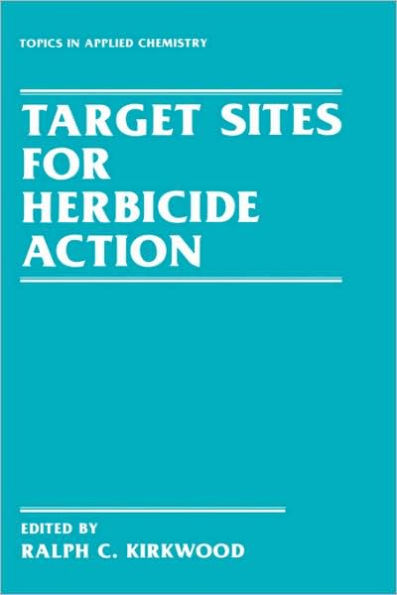Target Sites for Herbicide Action
The development of chemicals to selectively control the growth of weeds has been a fascinating success story which has unfolded largely during the last four decades. The dramatic growth of herbicide research that followed the wartime discoveries of the auxin-type herbicides (phenoxyalkanoic acids) resulted in a whole range of compounds and mixtures which are used to eliminate broad-or narrow-leaved weeds from agricultural, horticul tural, or forestry crops. Today, the safe use of this armament of compounds requires our understanding of their mode of action, metabolism, and environmental persistence. The most recently developed herbicides are highly effective inhibitors of specific enzyme systems, and formulation may be an important factor determining their efficient delivery at specific target sites. In this book, the major target sites of herbicide action are discussed in Chapters 1-5, with particular reference to photosynthesis; amino acid, lipid, and carotenoid synthesis; and other primary target sites. The effects of synergists or antagonists as modifiers of herbicide action are described in Chapter 6. The importance of efficient target site delivery as a fundamental factor in herbicide activity and selectivity is generally recognized. Delivery of a potentially lethal dose of active ingredient may depend on a whole range of factors including the efficiency of application, retention, absorption, translocation, immobilization, and detoxification. These aspects are considered in the remaining chapters, with particular reference to the pathways and mechanisms involved in the uptake, translocation, and metabolism of soil-and foliage-applied herbicides.
1101312424
Target Sites for Herbicide Action
The development of chemicals to selectively control the growth of weeds has been a fascinating success story which has unfolded largely during the last four decades. The dramatic growth of herbicide research that followed the wartime discoveries of the auxin-type herbicides (phenoxyalkanoic acids) resulted in a whole range of compounds and mixtures which are used to eliminate broad-or narrow-leaved weeds from agricultural, horticul tural, or forestry crops. Today, the safe use of this armament of compounds requires our understanding of their mode of action, metabolism, and environmental persistence. The most recently developed herbicides are highly effective inhibitors of specific enzyme systems, and formulation may be an important factor determining their efficient delivery at specific target sites. In this book, the major target sites of herbicide action are discussed in Chapters 1-5, with particular reference to photosynthesis; amino acid, lipid, and carotenoid synthesis; and other primary target sites. The effects of synergists or antagonists as modifiers of herbicide action are described in Chapter 6. The importance of efficient target site delivery as a fundamental factor in herbicide activity and selectivity is generally recognized. Delivery of a potentially lethal dose of active ingredient may depend on a whole range of factors including the efficiency of application, retention, absorption, translocation, immobilization, and detoxification. These aspects are considered in the remaining chapters, with particular reference to the pathways and mechanisms involved in the uptake, translocation, and metabolism of soil-and foliage-applied herbicides.
169.99
In Stock
5
1

Target Sites for Herbicide Action
340
Target Sites for Herbicide Action
340
169.99
In Stock

Product Details
| ISBN-13: | 9780306438462 |
|---|---|
| Publisher: | Springer US |
| Publication date: | 10/31/1991 |
| Series: | Topics in Applied Chemistry |
| Edition description: | 1991 |
| Pages: | 340 |
| Product dimensions: | 6.10(w) x 9.25(h) x 0.03(d) |
From the B&N Reads Blog
